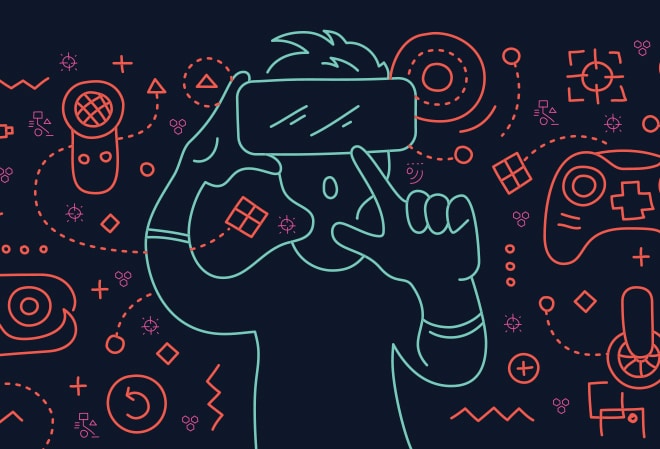Augmented Reality vs. Virtual Reality

Although two years later than the “Back to the Future” franchise predicted, inventions in the movies have, or are expected to, make their debut in 2017. For example, hoverboards (just not the way we imagined) Mr. Fusion robot, Nike’s self-tying shoes, smart glasses in the form of virtual reality headsets, etc.
But with virtual reality, you can now ride on a roller coaster with only your couch cushions as a safety belt.
And with augmented reality, we’ve progressed from clapping to turn off the lights to asking a robot, imperative enough to have a name, to control the light across the room.
Movies like “Back to the Future” and “The Jetsons” not only excited us about the future of technological advancements, but they may actually have predicted inventions. In “Back to the Future” remember how past-Marty Mcfly’s mom had a crush on her son, who she thinks is a new student at the school? And remember how uncomfortable that was to watch because Marty could not exist without his mother, who was borderline stalking him? It was weird, but you had to sympathize with her because he was also part his father, whom she actually loved.
Virtual reality and augmented reality work the same way as the complicated “Back to the Future” relationship. While VR and AR are not the same, they need each other to exist. It’s weird and complicated, but makes sense.
To continue on the movie theme, the newspapers in “Harry Potter and the Deathly Hallows” told the story of when Gringotts Wizarding Bank was vandalized. And instead of a typical photograph accompanying the story, the image moved. It showed the goblins, that operated the bank, trying to figure out how the break in occurred.
We can now do that today. Search in either your App Store or Google Play for the Logic+Magic app. Download it on your phone, and place your camera over the next page. The objects showing on your screen, but not in real life, are aspects of augmented reality. And because it still maintains a connection to the real world – AR – a headset isn’t necessary.
But in order for that image to come to life on your phone, it has to use virtual reality to create the aspects that are not a part of the real world. The two technologies operate separately, but depend on each other to exist.
How Each is Used Today
Not only do both virtual reality and augmented reality have an obvious cool-factor, but they are necessary to keep up with the way consumers are digesting information today.
VR:
- Video Games – Using the headset to put place you in the world of the next Halo venture.
- Healthcare Education and Physical Therapy – Medical, Dental and PT students are able to practice their, well, practice through a virtual reality. Similarly, those going through physical therapy can receive rehab instruction through the headset.
- Concerts/Events – If there is an event your company is hosting at a certain venue, but you want it to have more of an international reach, you can display the seminar via VR.
- Tourism – Want to visit the Eiffel Tower without paying the thousands of dollars in plane tickets? Visit it as if you were touching the steel beams via the headset and an app on your phone.
AR
- Shopping through a magazine – In 2009, Esquire Magazine allowed readers to shop the products on the page as they were flipping through the magazine
- DIY – The Sherwin-Williams app will use your mobile camera to view a wall in your house, then test different paint colors through the image displayed on the app.
- Pokémon Go – Need I say more?
- Snapchat – Unfortunately, those filters aren’t your actual face.
You’re Going to Need Both
Deciding which technology to implement isn’t quite the point. Eventually, you’re going to need to know and utilize both. But only if they’re used properly.
And again, you can’t have one without the other. Like Marry Mcfly couldn’t exist without the 1955 version of his obsessed mother, augmented reality cannot exist without it’s cousin, virtual reality.